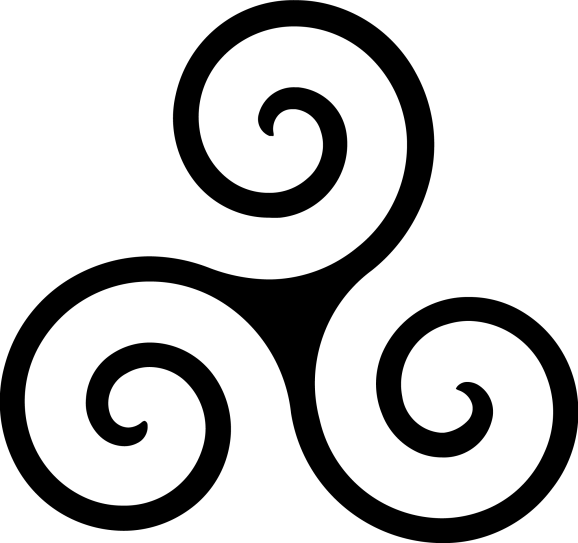A Quick Peek Inside How We Work: The Back End of the Revolution

The main thing which we have talked about extensively on our blog is how our outlook on the world intersects with the problems that we see with the current technologies and structures that people interact with on a daily basis. These articles serve an important purpose; they serve as a record of what we believe, and allow us to give long-form, reasoned arguments for why we believe this. But there is an aspect of AKASHA that we haven’t covered before, and it’s one which is foundational, as it affects every member of the team on a daily basis: how we work.
I joined the team in late March 2019, which as of the time of writing means I’ve been here for three months, and those three months have well and truly opened my eyes to a new way of approaching collective action and creation. Whether we’ve been working in a nonstandard way for years, or we’re fresh out of a cut-and-paste, top-down hierarchy where you turn up to your assigned portion of the office each day and plug away for 7.5 hours with an hour for lunch, we all share a fundamental belief that it is not just what we are working on that is breaking new ground, but how we are organizing and collaborating when working on it.
Breaking out of deeply-ingrained past work habits is a difficult thing to do, but once you’ve begun to untangle yourself from the outdated mode of working that is still so pervasive in offices up and down the land, you begin to feel lighter, and gain a greater sense of clarity and purpose.
We shape our tools and afterwards our tools shape us - Marshall Mcluhan
There are many ways in which AKASHA differs greatly from your regular working arrangement, but for brevity’s sake, here are just three key points:
Remote First 🌎🌍🌏
In a world where you can quite easily keep up with your friends in Hong Kong, California, and Micronesia simultaneously in one group chat, necessitating having your colleagues all come to the same place five days a week is a fairly outdated concept.
The AKASHA Team is distributed all over the world; we build our processes around the concepts of remote work by default, even though some of the team members work together in offices from time to time. This means that the act of building a team focuses more on the skills and values of the individuals involved, and not their geographical proximity to your base of operations.
Remote first offers more flexibility and freedom, allowing people to perform their job as best works for them. For me, this has meant being able to select my working environment, visit friends all over the country whilst still keeping on top of my workload, and avoid moving to a big city to find the challenges and meaning that I want from work.
The workplace as we knew it is dead, the world is now your workplace, and with it comes a lower environmental footprint, less urban overcrowding, and a greater sense of freedom.
Embracing Asynchronicity 🕒🕘🕓
The spread of the team means that just because you’re up and ready to work, it doesn’t mean that everyone else is! At AKASHA, we plan things well in advance with the knowledge that everyone has different time zones, sleeping patterns, and even working hours. At first this can be a difficult thing to get your head around, and frequently group discussions to plan a meeting will carry the weight of several people writing “5pm which timezone?” One of the biggest benefits of this is the difficulty, and therefore structural evasion, of one of the most hated parts of modern office working: the spontaneous three-hour meeting. Three hours of four people’s time is 12 hours of time that could be allocated elsewhere, and having this kind of thing drop right into a busy day can have a giant effect upon your ability to get things done.
Asynchronicity means being mindful of your colleagues’ workloads, becoming a better planner, and being more efficient with time. Just because you’re working on GMT, and your co-worker is on +3, it doesn’t mean you are going to be any less productive than if you were working in a synchronous organization.
Doing Away With Internal Email 📧👉🗑️
This is by far the best part of the AKASHA workplace 3-piece puzzle, and is intrinsically linked to both remote-first and asynchronous working. In order to reach a goal together, in order to engage in the actual act of working as a team, two or more people have to communicate in an iterative fashion; email is not a tool conducive to doing this. Emails are a broadcast from one inbox to another, they break up the natural flow of a working day, they lack responsiveness, and they attempt to push people into unnatural ways of communicating with each other. Working as part of an effective distributed team means doing away with this medium, and moving conversations onto a tool that is purpose-built for collaboration in teams. Another large benefit of this is that you can very easily segment conversations depending upon teams and topics, search for previous threads to fill in gaps in your understanding, and pepper your output with as many emojis and GIFs as you like.
Ditching email means you no longer get the fear every time you press the send button, you gain greater understanding of all those things you’re working on, and you don’t have to change messaging mode every time you start work.
Any reality is an opinion, we make up our own reality - Timothy Leary
Building Upon This... 🔧🧰⛏️
As with everything at AKASHA, the rules which govern why, when, and how we are doing things are constantly being tested and changed as we grow. We know full well that we are not currently where we will end up, and our openness and willing to try new things makes us very unique as an entity. These practices are occurring in a world where a lot of people pine for more flexibility and influence in the sphere of their life that they spend the majority of their waking hours.
From my side, It’s inspiring to know that I’ve found a group of radicals and trailblazers whose mission is to change fundamentally how we approach the structural and organizational ways that we create within, and interact with, our world.
If you’re interested, after reading this, in joining us, you can find our job listings here. Apologies if the page is currently empty - why not bookmark it and check back later? 💭
You can also join the conversation on Twitter, LinkedIn, Facebook, and Discord, and subscribe to our newsletter to make sure that you’re always kept up-to-date with what we are up to! 🤗

